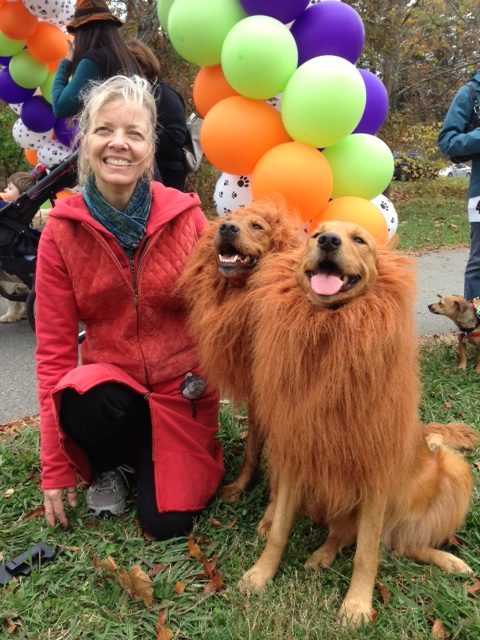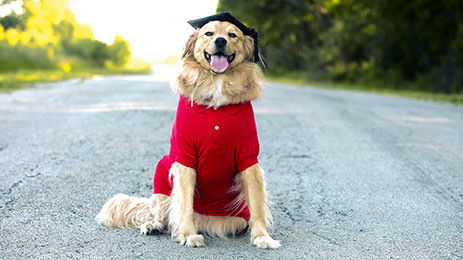Usual Behavioral Issues and Their Solutions in Dog Training
Usual Behavioral Issues and Their Solutions in Dog Training
Blog Article
Necessary Tips for Successful Dog Training: A Guide for Animal Owners
Reliable pet training is a diverse process that requires a tactical method customized to both the family pet's character and the owner's purposes. Understanding just how to navigate these obstacles can significantly improve the training experience, inevitably changing the connection in between owner and canine.
Comprehending Dog Behavior
Comprehending pet dog behavior is crucial for effective training and fostering a harmonious partnership in between pooches and their owners. Dogs communicate mostly via body language, articulations, and activities, making it essential for proprietors to interpret these signals properly. Recognizing a pet dog's stance, tail placement, and ear alignment can give understandings into its psychological state. A wagging tail does not constantly show joy; it can likewise signal excitement or stress and anxiety.

Socialization plays a substantial function in dog habits; direct exposure to numerous environments, people, and other pets can substantially impact a pet's personality. Elements such as breed attributes and individual temperament need to guide training approaches, as some breeds might have certain behavioral traits that necessitate tailored techniques. By comprehending these components, proprietors can develop a supportive setting that urges favorable actions, resulting in successful training results and a much deeper bond with their animals.
Establishing Consistent Commands
Effective interaction with your pet starts with establishing consistent commands. This fundamental component of training is important for promoting understanding in between you and your pet. Uniformity in the commands you make use of makes certain that your pet can reliably connect particular words or expressions with the desired habits.
When selecting commands, choose clear, distinctive words that are easy to set apart and claim from one an additional. Avoid using similar-sounding commands that might perplex your pet dog. Using "sit" and "stay" is suitable, however "rest" and "hit" could lead to misunderstandings.
Furthermore, maintain the same tone and quantity for each and every command. Pets are sensitive to vocal hints, so varying your tone can develop confusion.
It is equally vital to ensure that all relative get on the exact same page relating to the commands made use of. A united front in command usage will certainly prevent blended signals and strengthen the discovering procedure.
Favorable Support Strategies
The power of positive reinforcement in pet dog training depends on its capacity to encourage preferred actions with incentives and appreciation. This strategy is grounded in the principle that actions complied with by desirable outcomes are extra likely to be duplicated. By incorporating favorable reinforcement into your training program, you can efficiently shape your dog's actions in a positive way.
To carry out positive support, it's important to determine what encourages your pet, read this whether it be deals with, playthings, or verbal praise. When your dog performs a wanted activity, such as remaining on command, promptly award them with a reward or love. This association between the command and the positive outcome strengthens their understanding.
It's important to timing the rewards appropriately; supplying the support within seconds of the preferred actions helps your pet make the connection (dog training). Additionally, uniformity is vital-- make certain that all household participants make use of the very same commands and reward systems to stay clear of complication

Progressively, you can minimize the regularity of treats as your dog discovers the behavior, transitioning to commend or periodic benefits. This technique not just promotes a solid bond between you and your pet dog but likewise advertises a positive knowing environment, making training a delightful experience for both.
Socialization and Communication
Continually exposing your dog to a variety of environments, individuals, and various other animals is vital for their social advancement. Socialization must start early, ideally during the essential home window of 3 to 14 weeks, when pups are most responsive to new experiences. Nevertheless, older pets can likewise gain from continuous socialization efforts.
Present your dog to various settings, such as parks, pet-friendly shops, and urban locations. This exposure aids them adapt to numerous stimuli, decreasing anxiety and worry actions. Urge positive communications with other pets and people, making certain that these encounters are controlled and risk-free to cultivate self-confidence.
Use organized playdates with courteous pet dogs, as this can improve your canine's social skills and show them suitable habits. Obedience classes and training sessions also supply excellent chances for socializing, allowing your canine to connect with others in a supervised environment.
Display your canine's body movement during interactions, as this will certainly aid you gauge their comfort degree. Progressively enhance exposure to more tough circumstances while guaranteeing that each experience declares. A well-socialized pet dog is most likely to show balanced actions, making them a happiness to have in any kind of setup.
Addressing Usual Training Challenges
Every canine proprietor will certainly come across training challenges at some factor, despite their pet dog's age or socializing level. Determining common concerns such as stubbornness, diversions, and fearfulness can aid in developing effective methods for improvement.

Progressively present interruptions as the pet comes to be a lot more competent in commands. Short, constant training sessions are also effective in keeping interest.
Fearfulness can prevent a pet dog's learning procedure. Steady desensitization to the resource of worry, paired with favorable support, can help reduce anxiety. Perseverance is crucial; never ever force a pet dog right into a situation that triggers distress, as this might intensify the issue.
Eventually, understanding and addressing these usual challenges with a structured technique will certainly foster a more productive training experience, strengthening the Bonuses bond between dog and owner while advertising effective understanding.
Conclusion
In summary, effective dog training depends on a thorough understanding of canine habits, the facility of constant commands, and the application of favorable support methods. Socialization plays a crucial function in establishing well-adjusted pet dogs, while resolving usual training difficulties calls for perseverance and flexibility. By implementing these necessary methods, pet dog owners can cultivate a strong bond with their canines and advertise desirable actions, inevitably causing a harmonious relationship in between people and their canine buddies.
Comprehending pet habits is necessary for reliable training and fostering an unified relationship between dogs and their proprietors.Socialization plays a considerable function in pet dog behavior; direct exposure to different environments, individuals, and various other pets can substantially affect a dog's temperament.The power of favorable support in canine training exists in its ability to encourage preferred behaviors with rewards and praise. By incorporating favorable support right into your training program, you can effectively shape your pet's behavior in a constructive way.
In recap, successful dog training depends on an extensive understanding of canine actions, the facility of regular commands, and the application of favorable reinforcement methods.
Report this page